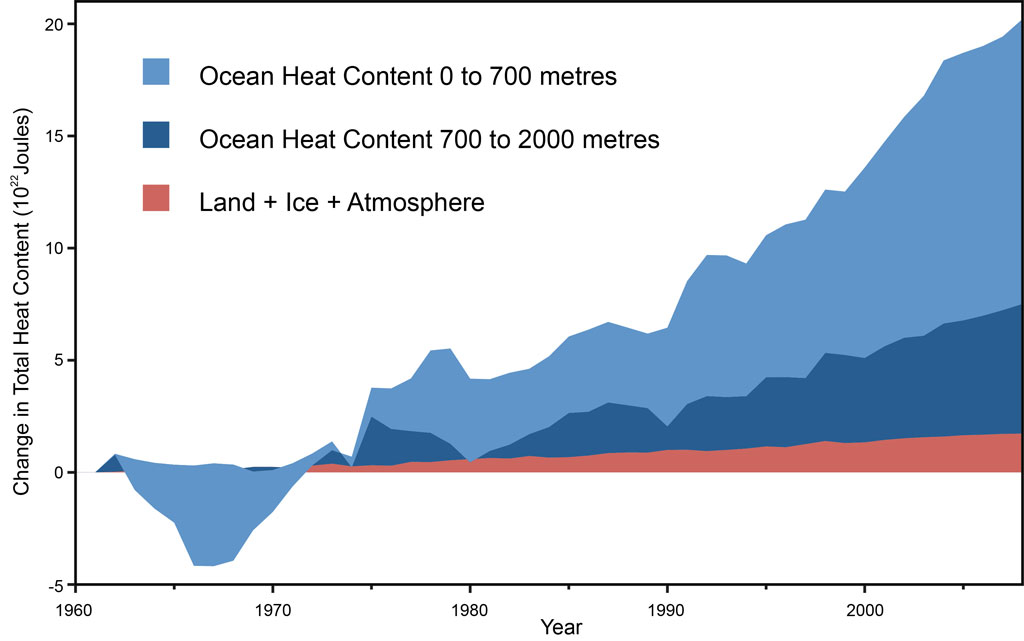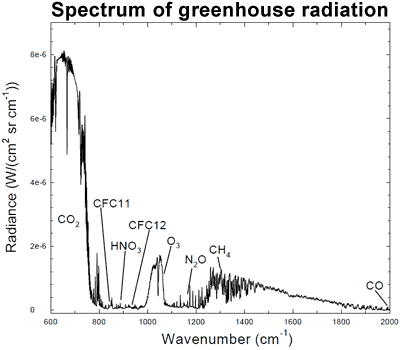
What The Science Says:
Models and direct observations find that CFCs only contribute a fraction of the warming supplied by other greenhouse gases.
Climate Myth: It's CFCs
"The observed data show that CFCs conspiring with cosmic rays most likely caused both the Antarctic ozone hole and global warming... The total amount of CFCs, ozone-depleting molecules that are well-known greenhouse gases, has decreased around 2000. Correspondingly, the global surface temperature has also dropped." (Qing-Bin Lu)
A paper Cosmic-ray-driven electron-induced reactions of halogenated molecules adsorbed on ice surfaces: Implications for atmospheric ozone depletion (Lu 2009) and also Lu (2013) examines the link between CFCs, cosmic rays and global warming. The bulk of the paper concentrates on the link between cosmic rays and depletion of ozone in the Arctic and Antarctic regions. This is interesting work that warrants a closer look (perhaps the subject of a future post) and the role of cosmic rays on climate are address elsewhere. However, the strongest statement is found towards the end of the 2009 paper, stating that "these data strongly indicate that global temperature has been dominantly controlled by the level of CFCs, modulated by the cosmic ray-driven ozone depletion over the past century." Lu is saying that the increased greenhouse effect from CFCs is the main contributor to global warming in recent decades.
Lu's hypothesis was disproven very simply by Nuccitelli et al. (2014). Lu argues that the radiative forcing (global energy imbalance) from CFCs matches global surface temperatures better than that from CO2 over the past decade. This is because as a result of the Montreal Protocol, CFC emissions (and emissions of hydrofluorocarbons, which replaced CFCs) have been flat over the past decade, and global surface air temperatures have also been essentially flat during that short timeframe, while CO2 emissions have continued to rise.
However, a global energy imbalance doesn't just impact surface temperatures. In fact, only about 2% of global warming is used in heating the atmosphere, while about 90% heats the oceans. Over the past decade, ocean and overall global heating have continued to rise rapidly, accumulating the equivalent of about 4 Hiroshima atomic bomb detonations per second (Figure 1).
Figure 1: Land, atmosphere, and ice heating (red), 0-700 meter OHC increase (light blue), 700-2,000 meter OHC increase (dark blue). From Nuccitelli et al. (2012).
So while CFCs might match surface temperature changes better than CO2 emissions over the past decade, CO2 emissions better match the relevant metric – overall global heat accumulation. Since a global energy imbalance influences global heat content and not just surface temperatures, this by itself is sufficient to falsify Lu's hypothesis.
The IPCC AR4 estimate that the radiative forcing from CFCs is 0.33 W/m². This is about 13% of the total radiative forcing from increased greenhouse gases (with carbon dioxide being the main contributor). However, Lu dismisses this value, arguing that CFC radiative forcing is calculated from climate models and not from direct observations. However, this argument is based on curve fitting and has no physical basis.
The physics of how CFCs might impose such a strong radiative forcing are not addressed. Lu mentions that the radiative forcing from CFCs haven't been directly measured, then moves onto statistical correlations. In fact, the greenhouse effect from CFCs have been quantified from surface observations of the infrared radiation spectrum (Evans 2006). The observed results are broadly consistent with model predictions of greenhouse forcing (although observations show slightly higher forcing than model results). The proportion of CFC forcing compared to total greenhouse forcing is still around 14%, a close match to the IPCC estimate of 13%.

Figure 2: Spectrum of the greenhouse radiation measured at the surface. Greenhouse effect from water vapor is filtered out, showing the contributions of other greenhouse gases (Evans 2006).
So we see that CFCs play only a small part in driving global temperatures. Unfortunately, this means that the recent drop in CFC levels will only have a small impact on global temperatures (if only it could be that easy). Of more concern is the increasing radiative forcing from CO2. The infrared spectrum analysis in Evans 2006 measures the extra heat trapped by rising carbon dioxide, finding a CO2 radiative forcing of 2.1 W/m² (again slightly higher than model predictions). This begs the question to those that argue that CFC (or any other mechanism) is meant to be causing global warming. If so, what's happening to all the heat trapped by CO2?
 |
The Skeptical Science website by Skeptical Science is licensed under a Creative Commons Attribution 3.0 Unported License. |